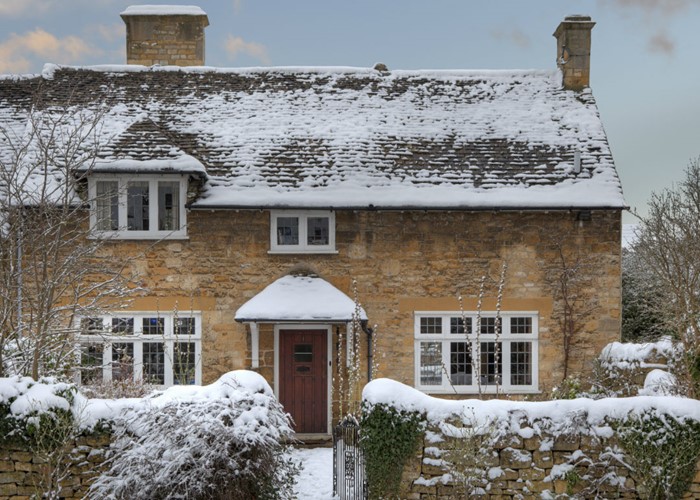House prices grinding to a halt

Say goodbye to house price increases - the sellers are back and out in force.
In its latest house price update, Rightmove revealed that it has experienced its slowest ever March. House prices are essentially at a standstill, with prices up just 0.1% on February – the smallest ever jump for this time of the year.
Ordinarily the price increase for March would be around 1.3%. So why has it completely plummeted?
The house price double dip
Last year, when the housing market first started showing the smallest of green shoots of recovery, I predicted that there would be a second batch of modest house price falls.
Related goal

Sell your home
If you want to obtain the best possible price when selling your home, then these ideas should help.
Do this goalThe logic behind my prediction was fairly simple. The housing market was in difficulty, so I assumed that the majority of homeowners who were tempted to sell their property were withdrawing from the market. This lack of stock was pushing prices upwards, in the short term, as demand was outstripping supply.
Eventually, however, I expected house prices to rise to a sufficient level that all of those homeowners who were thinking of selling in the first place would flood back to the market, believing prices had bottomed. That oversupply, I believed, would then put a handbrake on the recovery of house prices, and we would be back to square one.
And now that seems to be exactly what has happened.
- Adopt this goal: Sell your home
Flooding the market
New sellers are up by 17.5% from February, and by over a third year-on-year. That has led stock levels to reach an 18 month high, with over 105,000 properties now on the market with the site.
This in turn has led to a slight increase in the amount of unsold stock each estate agency boasts, from 63 to 65.
Ordinarily, the Spring price bounce would last a while, yet the influx of properties for sale has choked it off before Spring has even arrived.
What’s more, it’s not just Rightmove that are seeing this significant shift in the housing market – the Royal Institution of Chartered Surveyors this month reported it had seen new instructions outpacing demand for the second straight month.
According to the trade body, this is the first sustained shift towards the supply side in two years.
A buyer’s market
What does all this mean? Well, it could be be the start of a significant adjustment in the property market for both buyers and sellers.
Watch out for this scam if you’re a tenant!
For the past year or so, the balance of power has very much been with those people selling their homes. OK, they haven’t been able to demand prices that they might have back in 2007, but the chronic shortage of supply certainly allowed them to get a competitive price. What’s more, if the property was a particularly nice one, it would tend to be sold extremely quickly.
However, with this influx of properties on the market, things have changed, and the outlook is now looking quite different for buyers and sellers alike.
Buyers now have a far greater choice of properties to choose from, while they are also likely to get a better deal as sellers’ strong negotiating position has been undermined. If the number of properties available on the market continues to outstrip buyer demand, this will likely spark a second period of house price falls.
- Watch this video: The phantom rental property scam
The great unknown
But that might not happen. It may be that when the house price indices report falls next month, as they probably will, most of those potential sellers will be scared off and opt against putting their homes on the market.
House prices will then begin to recover, and the whole process could then be repeated for months on end until the market completely stabilises.
The Stamp Duty spanner
One potential spanner in the works is the doubling of the Stamp Duty threshold for first-time buyers to £250,000, announced in the Chancellor's Budget on Wednesday. This could affect the market in a couple of different ways.
Firstly, knowing that they can avoid the tax is likely to lead to an increase in demand from first-time buyers. This may help to reverse the supply-side shift, and may help to bump up house prices, particularly for those homes at the lower end of the market - the traditional first-time buyer target properties. It also gives first-time buyers a 1% price advantage over their long-time rival: the buy-to-let landlord.
Furthermore, the exemption may serve to reduce the price of typical first-time buyer homes currently priced at over £250,000, especially those close to the threshold.
So the cards are not all on the table yet. It will be interesting to see just how much impact, if any, the Stamp Duty change actually makes. What do you think? Tell us your thoughts using the comments box below!
Get the right price when buying
Whatever happens, when buying (or indeed selling) a property it’s important to get the best possible price you can. Personally, I relied on my Dad, who got us a cracking deal, but not everyone is fortunate enough to be related to an estate agent.
I’d recommend having a read of Save thousands on your property for some great tips on how to work out exactly what you should be offering for a home that catches your eye.
There may have been some good news on house prices over the past year, but we are certainly nowhere near out of the woods just yet.
More: Shave years off your mortgage | The top worst 10 towns for property repossessions
Comments
Do you want to comment on this article? You need to be signed in for this feature